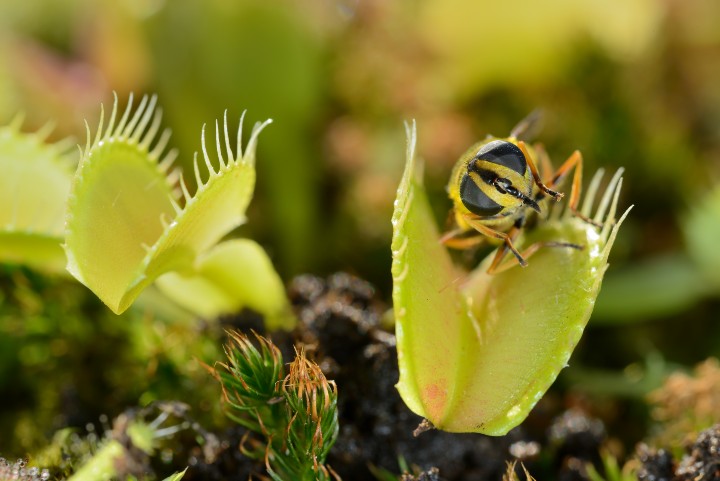Want to share feedback? Contact us.
LED strip lights add aesthetic appeal to your home but do they also make your home more attractive to, well, bugs?
Because we’d all rather avoid a sudden influx of bugs, here are 5 things you should know before deciding to upgrade your home with these pretty lights.
Here’s if LED Strip Lights Attract Bugs:
Scientifically, bugs are attracted to light because it reminds them of the moon, which means that yes, even LED strip lights are attractive to them. Any type of light that they can easily see is attractive to them.
LED lights typically come in a cool white or bluish-white color that bugs love so much, and the brighter they are, the more “bug-prone” they become. Dimmer lights are much less noticeable to them, and the good thing about this is that it doesn’t matter what type of light it is.
As long as your lights aren’t bright enough, they will get ignored. Bugs tend to be choosy like that.
What Kind of Bugs Do LED Strip Lights Attract?
The reason bugs, or at least certain types, are attracted to light is positive phototaxis. Phototaxis is an organism’s movement in response to light, and a positive phototaxis means that they move towards the light.
These bugs, in particular, are attracted to LED strip lights:
Spiders
These arachnids (not insects) mainly eat other bugs, and if these bugs have been tempted by your LED strip lights, then spiders would soon follow because it has now become an excellent place for foraging.
They’re not necessarily attracted to the lights themselves but to the food that all the other bugs attracted to the lights could potentially provide for them. It’s quite a smart move.
Wasps and Hornets
These are the peskiest of them all, and unfortunately, you could find them around your LED strip lights because spiders could be hanging around them, too: the bugs that are genuinely attracted by light are food for them.
You may not encounter as many wasps or hornets as other types of bugs, but it’s good to still be aware that they could pop up every once in their search for sustenance.
Bees
Although rarer, you may also find the occasional bee or two hovering by your LED strip lights. They are most likely going to be the nectar foragers, and the easiest way to explain that is because they have less of a certain chemical (octopamine) in their eyes than the pollen foragers do.
Even if their fear makes sense, they are mostly harmless creatures if left alone, and they play a very important role in our environment. Avoid harming them.
Flies
All sorts of flies and flying insects are attracted to light because it reminds them of the sun or the moon. These could be moths, mayflies, dragonflies, mosquitoes, beetles, etc.
Of course, your LED strip lights aren’t an exception. As long as they’re bright or warm enough, you can expect to eventually find flying insects buzzing around.
Centipedes
Unfortunately, centipedes, the nasty creatures that they are, could also be lurking in the nooks and crannies of your LED strip lights for the same reason that spiders and wasps are: food.
As long as it could be a food source for them, they’ll be there whether you like it or not.
How Can You Get Rid of Bugs on Your LED Strip Light?

There are many ways to get rid of bugs on your LED strip lights or in the surrounding area, and some of them are ingredients you can find at home.
- Pesticides/Insecticides ‒ I wouldn’t normally recommend them as they’re harmful to the environment, but they are a very easy and quick solution to repel bugs, especially flying ones.
- Grapefruit peel ‒ Grapefruit, like any other citrus fruit, contains acetic acid that spiders hate. An effective way to use them would be to dry them under the sun and then grind them in a food processor. You can then sprinkle the powder around areas where spiders have accumulated.
- Peppermint oil ‒ Mints, in general, like citrus fruits, have deep acetic acid properties that spiders are also repelled by.
- Sticky traps ‒ As the name suggests, they work by trapping insects because they’re very sticky. They come in bright colors to attract flies and other insects. They are available in any supermarket and are cheaper than insecticides.
- Water and vinegar ‒ A concoction made with two cups of apple cider vinegar, two cups of water, and one cup of sugar is an effective natural repellent for wasps and hornets.
- Flytraps – Flytraps are very useful in capturing flying insects because they usually have a smell that attracts them, such as rotting fruits or active yeast. However, they’re very offensive to humans and pets, so keep them at a distance.
Does the Color of the LED Strip Light Matter?
Since bugs are only attracted to certain colors, buying LED strip lights in a certain color could make the lights much less attractive to them.
Colors like yellow, orange, or something red-tinted emit longer wavelengths, making them harder for bugs to see, unlike colors like white and blue. These colors might be safer for your LED strip lights if you want to avoid turning your house into a bug hangout.
Are There Any LED Strip Lights Made That Don’t Attract Bugs?
Although there are types of LED lights marketed to “repel bugs”, there isn’t much information on their effectiveness. The reason for this is that bugs are attracted by color spectrums, and some of the colors visible to bugs aren’t visible to humans.
A manufacturer can’t claim that they’ve produced a LED light bulb or any type of LED light source that won’t attract bugs. Chances are, it’s still going to attract a few unless it’s dim enough not to.
Still, as mentioned above, if you choose warm colors, then bugs aren’t going to be attracted to them as much.
